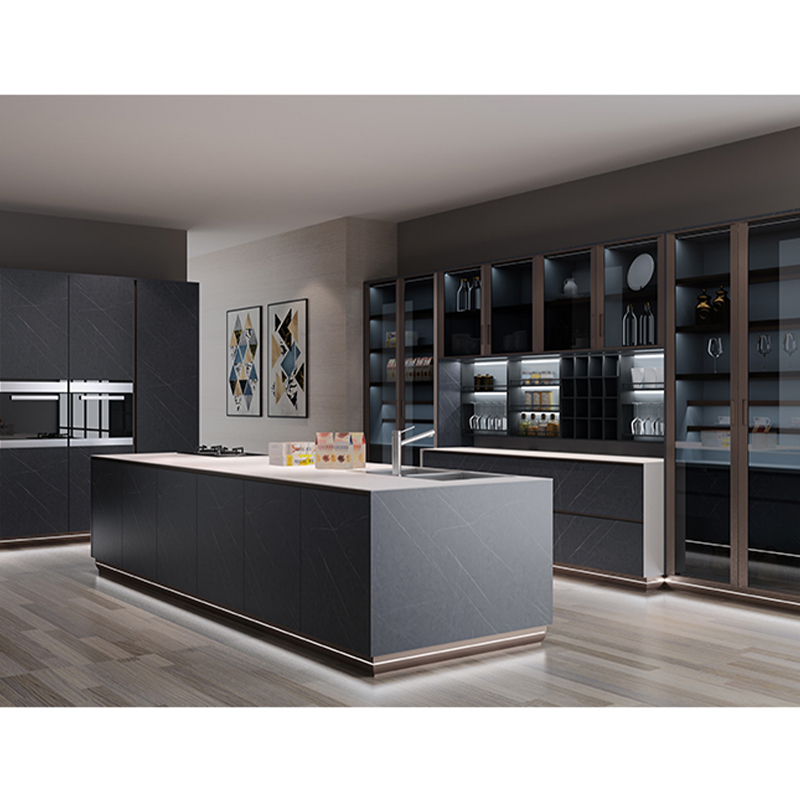How can the sealing strip of an aluminum frame glass hinged door achieve efficient waterproofing and dustproofing?
Release Time : 2025-10-30
The sealing strips for aluminum frame glass hinged doors achieve highly efficient waterproofing and dustproofing through a combination of material selection, structural design, installation techniques, and auxiliary design. Their core lies in constructing a multi-layered barrier to block the penetration of moisture and dust.
The material properties of the sealing strips are fundamental to waterproofing and dustproofing. Ethylene propylene diene monomer (EPDM) rubber, due to its excellent weather resistance, high and low temperature resistance, and chemical corrosion resistance, has become the preferred material for aluminum frame glass hinged doors. Its stable molecular structure allows it to maintain elasticity within a temperature range of -60℃ to 150℃, resisting aging and cracking, thus maintaining long-term sealing performance. While silicone rubber (MVQ) has a wider temperature range (-60℃ to 300℃), its higher cost limits its application, limiting its use to extreme environments. Thermoplastic vulcanizates (TPV) combine the elasticity of rubber with the processability of plastics, making them suitable for complex cross-section designs. In contrast, plasticized polyvinyl chloride (PVC) strips are gradually being phased out due to their tendency to harden and their halogen content, which is not environmentally friendly. High-quality sealing strips, formulated with a high-filler rubber base and antioxidant ratio, ensure long-term durability without deformation or detachment, reducing the risk of leakage at its source.
In terms of structural design, the sealing strips enhance protection through multiple sealing and pressure balancing mechanisms. Aluminum frame glass hinged doors typically employ a three-layer sealing structure: a sealing strip between the frame and sash blocks air convection; a sealing strip between the frame and glass prevents water seepage through gaps between the glass and the frame; and a middle pressure-equalizing sealing strip balances indoor and outdoor air pressure. The pressure-equalizing sealing strip creates a small gap after the window sash is closed, ensuring equal air pressure on both sides of the opening on the outer surface. Rainwater cannot seep in due to the lack of pressure difference, while the internal airtight cavity further blocks moisture. The semi-enclosed strip cross-section design expands the working range to accommodate different opening angles; the soft-hard composite strip uses a rigid outer layer to support deformation and a soft inner layer to fit the gaps, balancing sealing with flexible opening and closing.
The installation process is crucial to sealing performance. Press-fit installation ensures a tight fit and prevents detachment through an interference fit between the sealing strip and the profile groove. Through-fit installation is suitable for complex cross-sections, using an internal steel wire skeleton within the sealing strip to enhance stability. During installation, the size of the sealing strip must be strictly controlled to avoid folding due to excessive length or gaps caused by excessive length. For example, after installation, the sealing strip between the frame and sash should maintain a compression of 0.5-1mm with the profile groove to ensure a seal while avoiding excessive compression. Furthermore, 45-degree splicing or special corner fittings should be used at the corners of the sealing strip to prevent right-angle gaps from becoming leakage channels.
Auxiliary designs further enhance the protective capabilities of the sealing strip. A drip edge, by incorporating a drainage structure at the top of the operable window, directs rainwater outdoors, preventing backflow from openings. A sloping windowsill design allows accumulated water to drain naturally, preventing accumulation and seepage. A drip tip, by extending the top edge of the window, blocks the capillary action of rainwater climbing along the inner wall of the profile. These designs, in conjunction with the sealing strip, create a three-dimensional protective system from top to bottom.
Routine maintenance is key to keeping sealing strips effective for a long time. Regularly check the surface of the strip for cracks or aging, and replace any deformed or hardened parts promptly. Avoid using organic solvents when cleaning to prevent corrosion. Before winter, apply a special lubricant to prevent the strip from becoming brittle due to low temperatures. With proper maintenance, the lifespan of sealing strips can be extended to more than 10 years, continuously ensuring the waterproof and dustproof performance of aluminum frame glass hinged doors.







